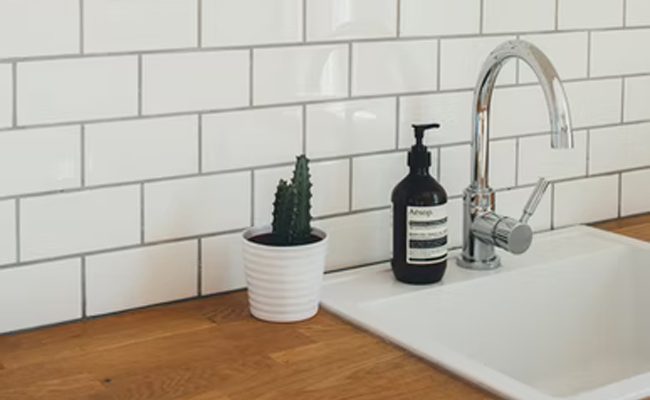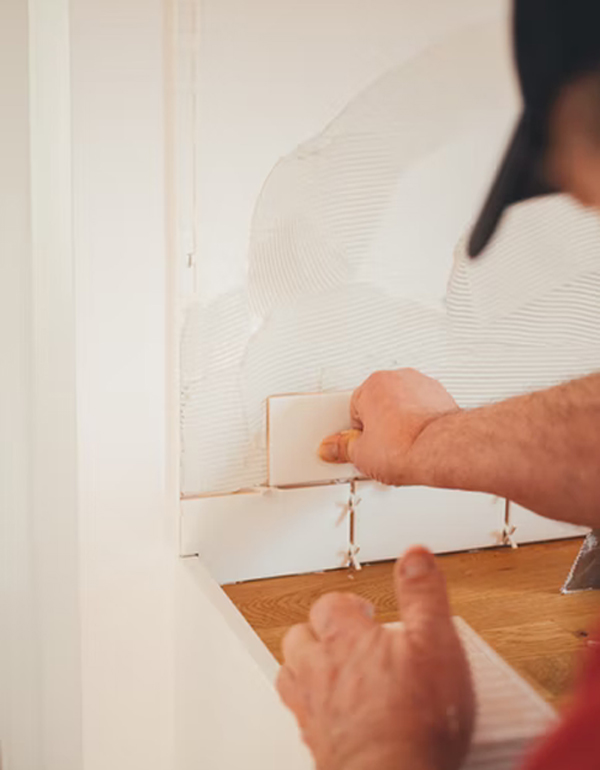
Water damage in tiles is extremely problematic. It causes not just financial, but physical, mental, and emotional stress. To effectively avoid it, you need to fully know what causes it. This post will discuss that and more. After reading this, you’d be aware of:
- The main causes of water damage in tiles
- Ted flags that tip you off that there is water damage
- Water damage prevention
Tiles are very easy to maintain. It just so happens that you need to effectively deploy measures to prevent water damage. By reading this, such concern will no longer be a concern. So read on, take note, and duly apply.
4 Main Causes of Water Damage in Tiles
The following are the most common reasons why tiles can suffer from water damage:
Reason #1: Leakage
The most common reason why you’d see water underneath your tiles is leakage. This is the case with tiles on bathrooms with plumbing that are connected to the mainline. As all are underneath, they could already be damaged without anyone in the household ever noticing. Such damage can cause water to pool beneath the tiles. Such will then cause massive amounts of stress. To quickly identify such a case, you could do the following:
- Investigate where the water damage is
- Check on where the water damage is most severe
- Work your way back to see the water source
- If a bathroom is located on a higher floor, you could also look for water drippings on the ceilings of lower floors
Reason #2: Clogged Drains
Clogged drains can also cause water damage. This is the case because clogging can also cause pooled water underneath tiles. Clogged drains can stem from your toilet or sink and eventually affect your floors and the very wall support of your bathroom.
Reason #3: Grout Issues
Grout problems can also lead to water damage to tiles. Poor grout cannot control seepage. As such, tiles get exposed to excessive moisture and water. Damaged, cracked, or loose grout can easily allow for such a scenario. The good thing with this reason though is you could easily just regrout to preserve the pristine condition of your tiles.
Reason #4: Damaged Tiles
Using damaged tiles also leads to water damage. Broken or cracked tiles allow water to seep through them which leads to damage to their underlayment. This is why it’s important to always replace broken or damaged tiles.
Red Flags to Watch Out For: You Could Be Suffering from Water Damage if You See the Following
Now that you know what causes water damage on tiles, it is now imperative that you’re aware of early signs of such damage. Knowing them will help you in avoiding having to spend more and stress more on a wildly problematic bathroom with damaged tiles. Seeing the following signs should already put you on alert:
Red Flag #1: Your floors are warped
You should already be on alert if you see that your floors are warped or dipped. This happens due to the rotting of the subfloor. Such rotting creates an uneven surface that causes your floor to warp or dip. To check on this, you could do the following:
- go to your basement and check on the status of your subfloor
- go to your crawl space and check on the status of your subfloor
- check for signs of any water damage
Red Flag #2: You see hollow or loose tiles
Seeing loose or hollow tiles already signals that your flooring is experiencing water damage. This is because this can only happen if a tile’s adhesive is weakened. Such can only ever take place if tiles are constantly exposed to water. Such exposure weakens a tile’s adhesive and causes movement. Such is also the case with hollow tiles. Seeing hollow tiles indicates that a void already exists due to water damage. You should immediately contact a professional should you see any of such signs. An immediate repair can prevent massive damage to your bathroom.
Red Flag #3: Mould growth
The presence of mould or mildew in your bathroom also signals that your tiles are suffering from water damage. This is because mold or mildew can only grow if your tiles are consistently exposed to moisture. Moist can seep through tiles and create a breeding ground for bacteria and microorganisms. This is why it’s important for you to keep your bathroom clean and dry at all times.
Practical Steps for Water Damage Prevention
You can avoid water damage to tiles by doing the following:
- Maintain regular tile maintenance where you get them cleaned and closely evaluated
- Always immediately address any issue once observed
- Never let any spill dry out.
- Never let any stain dry out.
- Opt for regrouting once mould is present.
- Have your grout lines sealed every two to three years.
- Ask help from professionals in situations where you don’t have the proper tools and skills to deal with a tile accident

Tile care is very easy. You should expect to enjoy your beautiful tiles for years to come so long as you remain consistent in keeping them clean, dry, and free from any water damage. Just always remember that when you’re in doubt, the easiest and best thing to do will be to simply ask for professional help. Contacting experts who fully know what they’re doing will end up saving you not just money, but time and energy.
Leave a Reply